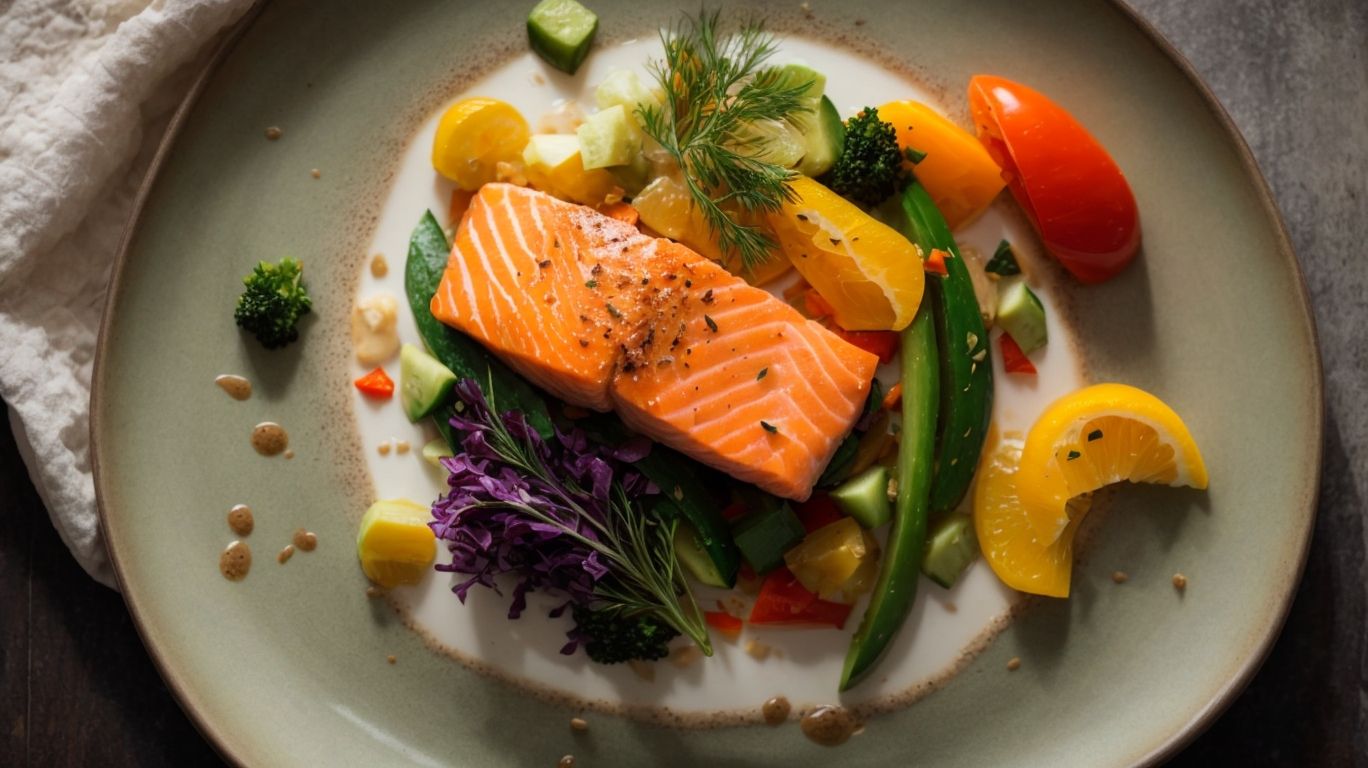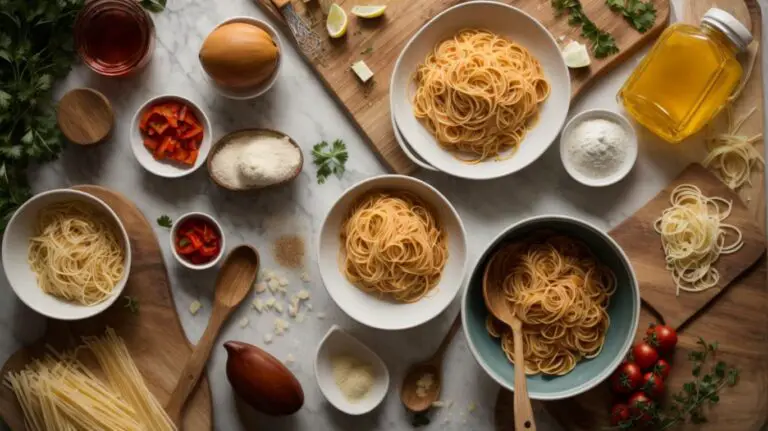How to Cook Salmon for Baby?
Are you a parent looking to introduce your baby to the wonderful world of seafood?
Salmon might just be the perfect choice!
We will explore why salmon is a good food for babies, what nutrients it provides, and the potential benefits of incorporating it into their diet.
Learn how to choose the right salmon for your little one, how to prepare it safely, and discover some delicious salmon recipes for babies.
Find out all about feeding salmon to your baby and the precautions you should take along the way.
Key Takeaways:
Why is Salmon a Good Food for Babies?
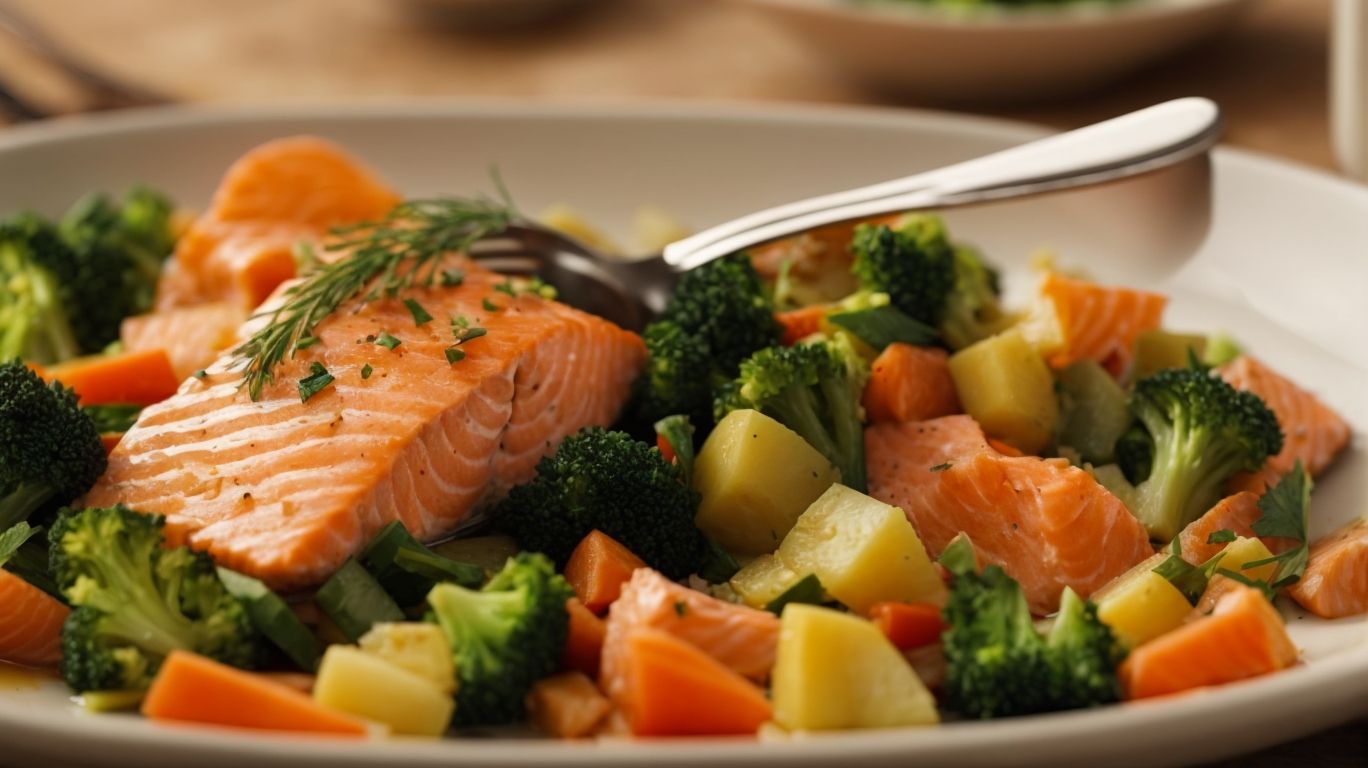
Credits: Poormet.Com – Patrick Brown
Salmon is an excellent choice for babies due to its rich nutritional profile and health benefits. It is a great source of essential omega-3 fatty acids, vital nutrients, and vitamins that support your baby’s growth and development.
Omega-3 fatty acids, specifically DHA and EPA found abundantly in salmon, play a crucial role in the development of a baby’s brain and eyesight. These nutrients are essential for cognitive function and visual acuity, making salmon an ideal food for promoting optimal brain development in your little one.
Along with omega-3 fatty acids, salmon is packed with high-quality protein, which is essential for muscle development and overall growth. The presence of important nutrients like vitamin D, vitamin B12, and selenium further enhances the nutritional value of salmon, supporting a robust immune system and overall health in babies.
Introducing salmon into your baby’s diet can be a great way to provide them with the necessary nutrients for healthy growth and development. Whether steamed, baked, or pureed, there are various ways to incorporate this nutrient-rich fish into your baby’s meals, ensuring they receive the benefits of this superfood at an early age.
What Nutrients Does Salmon Provide for Babies?
Salmon offers a range of essential nutrients for babies, including omega-3 fatty acids, high-quality proteins, vitamin D, and B vitamins. These nutrients play a crucial role in supporting brain development, immune function, and overall growth.
Omega-3 fatty acids, abundant in salmon, are essential for brain development in babies. These fatty acids contribute to cognitive function and visual acuity, crucial during infancy and early childhood. Proteins in salmon aid in muscle and tissue growth, supporting the overall physical development of the baby. Vitamin D from salmon helps in bone development and absorption of calcium.
B vitamins present in salmon, such as B6 and B12, are vital for energy metabolism and red blood cell production, essential for maintaining a healthy immune system and preventing anemia in babies.
What Are the Potential Benefits of Introducing Salmon to Babies?
Introducing salmon to babies can lead to numerous health benefits, including improved brain development, enhanced immune function, and overall growth support. The omega-3 fatty acids and essential nutrients in salmon play a pivotal role in boosting your baby’s well-being.
Omega-3 fatty acids are essential for brain health, as they support cognitive function and neurological development in infants. By incorporating salmon into your baby’s diet, you provide a good source of DHA, a type of omega-3, which is crucial for brain growth.
The high protein content in salmon aids in muscle and tissue development, fostering proper growth and development in your little one.
Not only does salmon contribute to physical development, but it also strengthens your baby’s immune system, helping to defend against common illnesses and infections. The presence of vitamin D in salmon supports the immune response and promotes overall health.
How to Choose the Right Salmon for Your Baby?
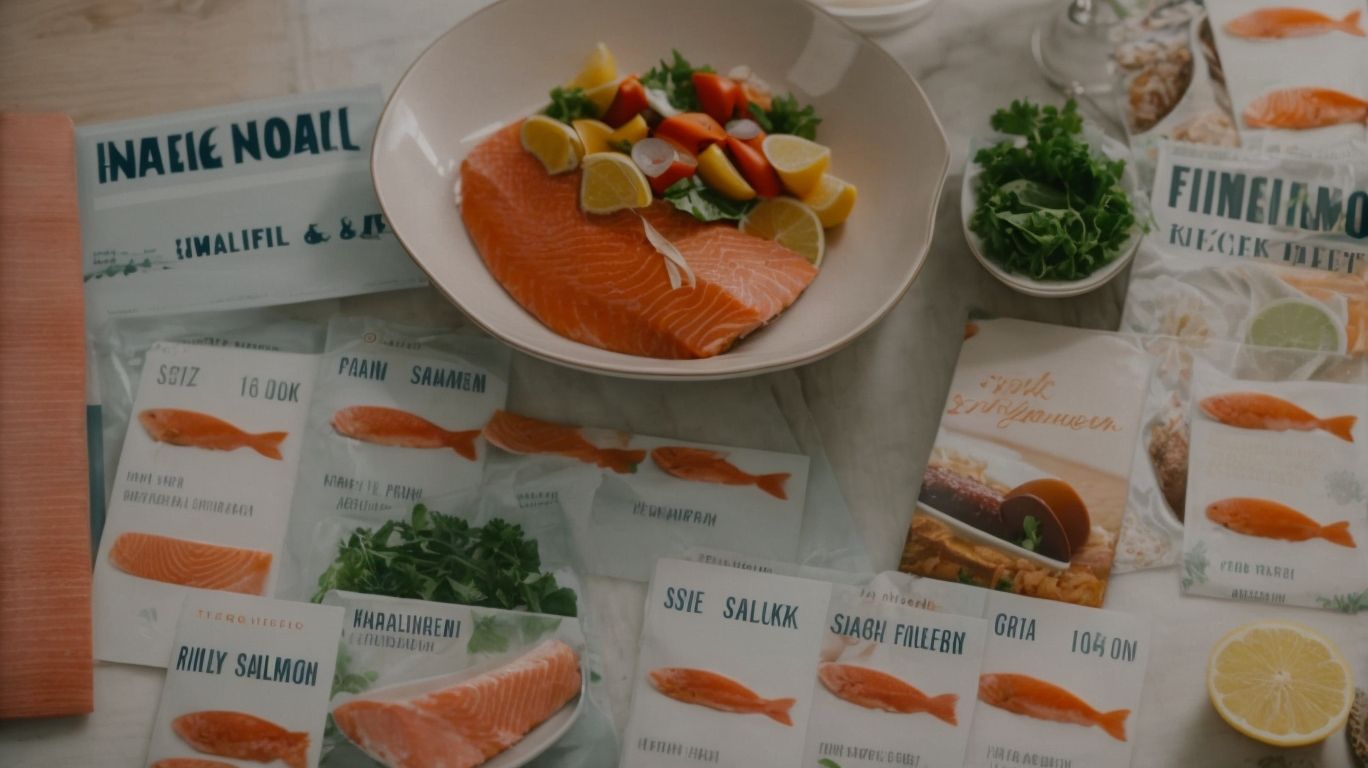
Credits: Poormet.Com – Joshua Miller
Selecting the perfect salmon for your baby involves considering factors like whether to choose frozen or fresh, wild-caught or farmed, and the best quality options available. Ensuring you pick the right salmon ensures your baby receives the highest nutritional benefits.
When opting for salmon for your little one, the choice between frozen and fresh can impact the taste and texture of the fish. Fresh salmon is generally favored for its flavor and tenderness, while frozen salmon can retain its nutrients well if frozen properly. Wild-caught salmon is known for its rich flavor and high levels of omega-3 fatty acids, essential for brain development. On the other hand, farmed salmon, although generally more affordable, may contain higher levels of contaminants. Searching for reputable sources and labels like ‘sustainably sourced’ can guide you towards the best quality salmon options for your baby.
What Types of Salmon are Safe for Babies?
Regarding salmon for babies, it’s crucial to ensure you choose safe options that are low in mercury and free from common allergens. Opt for reputable sources and verify the quality and safety certifications to safeguard your baby’s health.
One way to identify safe salmon options is to look for labels that indicate low mercury levels, such as ‘wild-caught’ or ‘sustainably sourced.’ These terms often signify healthier choices for your little one.
When purchasing salmon, always check for allergen-free certifications to avoid potential reactions. By being vigilant about the origins and quality of the fish, you can minimize any risks associated with allergies or contaminants.
Remember, your baby’s well-being comes first, so make informed decisions when it comes to selecting salmon for their diet.
What to Look for When Buying Salmon for Babies?
When purchasing salmon for your baby, pay attention to freshness, quality, and storage recommendations. Properly stored salmon retains its nutritional value and freshness, ensuring that your baby receives the best possible food quality.
Regarding freshness, look for salmon with firm flesh and a mild ocean-like aroma, indicating it is still fresh. Quality indicators include bright, vibrant color and minimal browning around the edges.
- Ensure that the salmon is properly packaged and sealed to maintain freshness.
- When storing, place the salmon in an airtight container or wrap it tightly in plastic wrap before refrigerating.
- For longer storage, consider freezing the salmon in airtight freezer bags.
By adhering to these storage steps, you can preserve the nutritional integrity of the salmon, making sure it remains a top-notch choice for your baby’s meals.
How to Prepare Salmon for Your Baby?
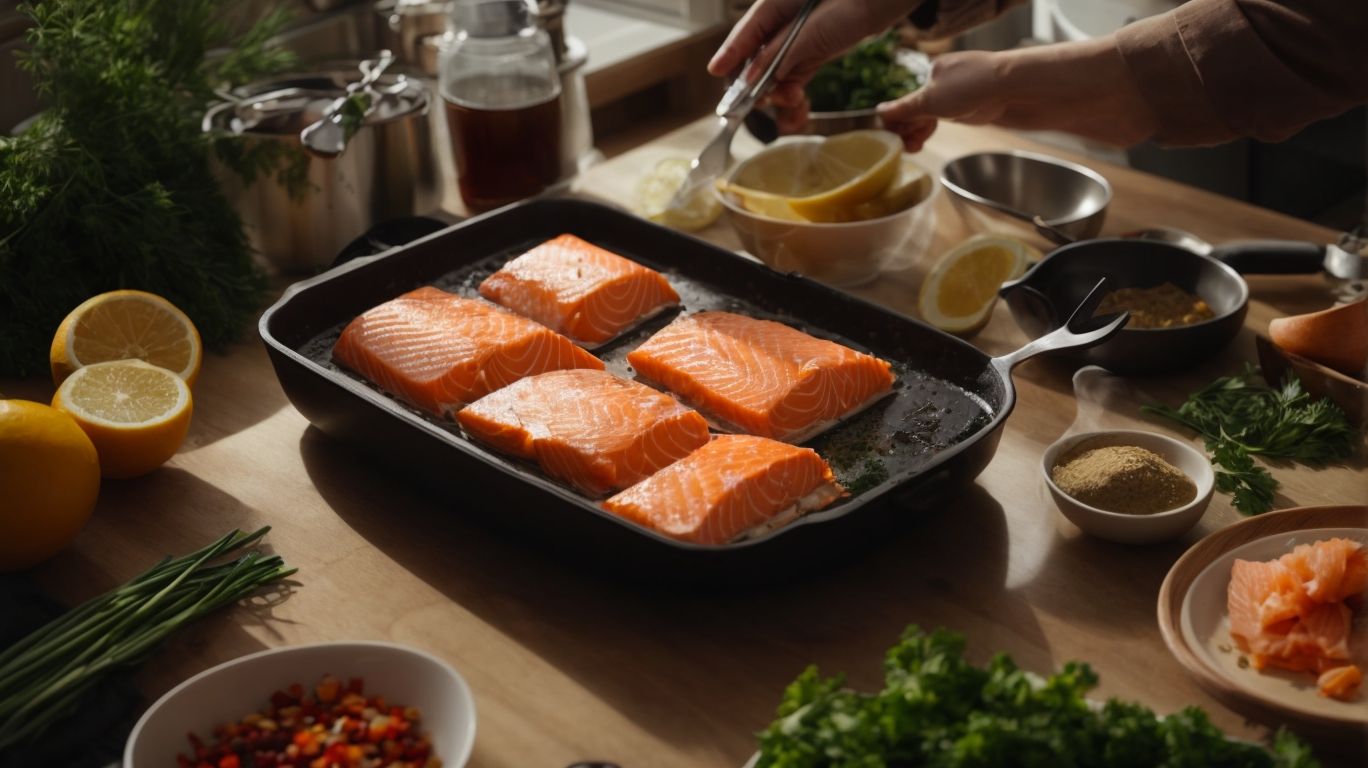
Credits: Poormet.Com – Andrew Rodriguez
Preparing salmon for your baby involves deciding whether to cook it thoroughly or serve it raw for baby-led weaning. Choosing appropriate cooking methods and ensuring proper food safety measures are essential for your baby’s well-being.
When considering cooking methods, options like steaming, baking, or poaching can help retain the nutrients in salmon while ensuring it is safe for your baby to eat. These methods are gentle and maintain the fish’s natural flavors, making it palatable for little ones.
For parents exploring baby-led weaning, offering small pieces of raw, high-quality salmon that is suitable for consumption without cooking can introduce your baby to different textures and tastes. Always make sure to source fresh, sushi-grade salmon and follow proper storage and handling practices to reduce any risks of foodborne illnesses.
Should You Cook or Serve Raw Salmon to Your Baby?
Deciding whether to cook or serve raw salmon to your baby depends on factors such as age, dietary preferences, and health considerations. Prioritizing safety and proper food handling practices is crucial when preparing salmon for your baby.
When introducing salmon to your baby’s diet, it is essential to consider their age as younger babies may need their salmon cooked to aid digestion and reduce the risks associated with consuming raw fish.
Dietary needs must also be taken into account; while raw salmon may retain more nutrients, cooked salmon can be easier for babies to digest. Ensuring the salmon is sourced from reputable and safe sources is vital to reduce potential risks of contamination.
What Are Some Recommended Cooking Methods for Salmon for Babies?
Recommended cooking methods for salmon for babies include baking, steaming, or poaching with gentle seasoning like garlic powder or a splash of lemon. These methods preserve the nutritional value of the salmon while enhancing its taste and appeal to your baby.
When baking salmon for your little one, preheat the oven to the required temperature and place the seasoned salmon on a lined baking sheet. Remember to cook until the fish flakes easily with a fork.
Steaming is a gentle method that helps retain the moisture in the salmon. Simply place the salmon in a steamer basket over boiling water and cover until it’s cooked through.
If you opt for poaching, simmer the seasoned salmon in a flavorful broth until it’s tender and cooked to perfection.
For extra flavor, you can sprinkle some dill or add a touch of olive oil to the salmon before cooking.
What Are Some Delicious Salmon Recipes for Babies?
Introducing your baby to delicious salmon recipes can be a delightful culinary experience. From baked salmon with sweet potato mash to salmon and vegetable puree, there are numerous nutritious and tasty options to choose from for your little one.
One popular salmon recipe for babies is salmon with avocado puree. Avocado adds a creamy texture and valuable nutrients. To prepare, simply steam some salmon until it flakes easily and blend it with ripe avocado until smooth. This dish is rich in healthy fats and protein, essential for your baby’s growth.
Another delightful option is salmon and pear mash, combining the delicate flavor of pear with the goodness of salmon. Puree cooked salmon and ripe pears together for a sweet and savory dish that your baby will love.
Baked Salmon with Sweet Potato Mash
Baked Salmon with Sweet Potato Mash is a wholesome and flavorful dish that combines the goodness of salmon with the sweetness of mashed sweet potatoes. This recipe provides a balanced mix of nutrients and textures for your baby’s mealtime enjoyment.
When preparing this dish for your little one, consider selecting fresh salmon fillets and organic sweet potatoes for optimal flavor and nutrition. To start, preheat your oven to the recommended temperature and season the salmon lightly with herbs and a touch of lemon juice.
For the sweet potato mash, boil the sweet potatoes until tender, then mash them with a hint of cinnamon for added flavor. Once the salmon is seasoned and the sweet potato mash is ready, place the salmon fillets on a baking tray lined with parchment paper and bake them until they are cooked through.
This delicious meal not only introduces your baby to essential omega-3 fatty acids found in salmon but also provides Vitamin A, fiber, and other nutrients from the sweet potatoes. To add some variety, you can experiment with different herb or spice combinations for the salmon or mix in some steamed veggies with the sweet potato mash.
Salmon and Vegetable Puree
Salmon and Vegetable Puree is a nutritious and easy-to-digest meal option for babies starting solid foods. Combining the goodness of salmon with various vegetables creates a flavorful puree that introduces diverse tastes and nutrients to your baby’s diet.
With its rich source of Omega-3 fatty acids, salmon contributes to brain development and overall growth in infants. Pairing it with vegetables like carrots, peas, and sweet potatoes not only enhances the taste but also boosts the vitamin and mineral content, essential for a healthy immune system. To prepare this delectable puree, start by gently poaching the salmon until it’s tender, then steam or boil the vegetables until they are soft. Next, puree the cooked ingredients together until you achieve a smooth consistency, adding a bit of breast milk or formula for added creaminess. Remember to cool the puree before feeding your little one to avoid any burns or discomfort.
Salmon and Avocado Toast
Salmon and Avocado Toast offers a delightful twist to traditional baby food combinations, incorporating the richness of salmon and the creaminess of avocado on a baby-friendly toast. This recipe introduces healthy fats and essential nutrients in a fun and appealing manner.
Rich in Omega-3 fatty acids from the salmon, this dish provides a great boost for brain development in growing babies. The creamy avocado adds a dose of monounsaturated fats, aiding in overall health and growth.
Assembling this treat is a breeze – simply mash ripe avocado and flaked salmon, then spread the mixture on toasted whole grain bread. This versatile recipe can cater to variations in texture by adjusting how the ingredients are mixed for different age groups.
How to Serve Salmon to Your Baby?
Serving salmon to your baby can be done in various ways to suit their developmental stage and preferences. Whether as finger foods for self-feeding, mashed or pureed for early eaters, or mixed with other foods for flavor exploration, adapting salmon presentation enhances mealtime enjoyment.
For infants who are just starting their solid food journey, offering small, bite-sized pieces of cooked salmon as finger foods can be a great way to introduce them to the texture and taste of this nutritious fish. As babies grow older and become more accustomed to eating solid foods, you can begin mashing or pureeing salmon to create smoother textures that are easier for them to consume.
Introducing salmon in combination with other ingredients, such as mashed sweet potatoes or avocado, can add depth of flavor and provide a well-rounded nutritional profile to their meal. It’s essential to monitor your baby’s reactions to new foods and adjust the serving options accordingly based on their comfort level and developmental readiness.
Finger Foods
Finger Foods are a convenient and engaging way to introduce salmon to babies who are exploring self-feeding. Salmon strips or bite-sized pieces offer a tactile experience and encourage hand-eye coordination while providing valuable nutrients for your baby’s growth.
When preparing salmon as finger foods for your little one, remember to start with fresh salmon fillets and remove any bones carefully to avoid choking hazards. It’s recommended to cook the salmon until it’s flaky and easily breakable for those tiny fingers to handle. Introducing salmon in this form not only aids in developing self-feeding skills but also stimulates sensory exploration through the different textures and flavors.
For serving, try cutting the salmon into long strips or small cubes, making it easier for your baby to grasp and nibble on. Mixing it with mashed vegetables or fruits can further enhance the nutritional value and taste, providing a well-rounded meal for your growing child to enjoy.
Mashed or Pureed
Mashed or Pureed salmon offers a smooth and digestible option for babies transitioning to solid foods. By blending salmon with baby-friendly ingredients, you create a nourishing meal that supports their nutritional needs and introduces new flavors gradually.
When preparing mashed or pureed salmon for your little one, opt for fresh, high-quality salmon fillets to ensure maximum flavor and essential nutrients. Simmering the salmon until it flakes easily with a fork is key to achieving a delicate texture that is easy for babies to manage. You can enhance the nutritional profile by adding vegetables like sweet potatoes or carrots for added vitamins and minerals.
Regarding blending techniques, use a food processor or blender to achieve a smooth consistency that is free of lumps, ensuring a pleasant eating experience for your baby. Adjust the thickness by gradually adding breast milk, formula, or water until you reach the desired texture that is easy for your baby to swallow.
Mixed with Other Foods
Mixing salmon with other foods offers a versatile way to incorporate this nutritious fish into your baby’s meals. Combining salmon with fruits, vegetables, or grains introduces diverse flavors and textures, enhancing the overall meal experience and providing a balanced nutritional intake.
Salmon is not only rich in omega-3 fatty acids essential for brain development, but it also pairs well with a variety of ingredients. For a sweet touch, try pairing salmon with pureed apple or pear. The natural sweetness of these fruits complements the savory flavor of the fish. Another option is to mix salmon with steamed carrots or peas, adding a pop of color and extra vitamins. When introducing grains, consider serving salmon alongside quinoa or brown rice for added fiber and nutrients.
Precautions to Take When Feeding Salmon to Your Baby
Feeding salmon to your baby requires certain precautions to ensure their safety and well-being. Watch out for potential allergies, prioritize high-quality sources of salmon rich in omega-3 fatty acids, and introduce new foods gradually to monitor your baby’s response.
When introducing salmon into your baby’s diet, be mindful of any signs of allergy such as rash, swelling, or difficulty breathing. It’s crucial to source fresh, wild-caught salmon or high-quality farmed options to maintain optimal nutrition for your little one. Gradually incorporating salmon into your baby’s meals allows for better digestion and adaptability. Always observe how your baby reacts to the new food and keep an eye out for any adverse responses. In case of any concerning symptoms, promptly consult a healthcare professional to address your baby’s needs and ensure their well-being.”
Avoid High Mercury Fish
To protect your baby from mercury exposure, avoid high-mercury fish species and prioritize low-mercury options like salmon. By selecting safe seafood choices, you reduce the risk of mercury-related health concerns and ensure a healthy dietary intake for your baby.
Mercury, a harmful neurotoxin, can adversely affect a baby’s developing nervous system if consumed in excessive amounts. High-mercury fish such as swordfish, king mackerel, and tilefish are to be avoided, especially for infants. The Environmental Protection Agency recommends limiting these varieties in a child’s diet.
- Instead, opt for salmon, a nutritious fish rich in omega-3 fatty acids that promote brain development and overall health. Salmon is not only low in mercury but also offers essential nutrients like protein, vitamin D, and selenium, beneficial for your baby’s growth.
- When preparing salmon for your little one, consider baking or grilling it to retain its nutritional value. Pair it with vegetables or whole grains for a well-rounded meal that supports your child’s development.
Introduce One New Food at a Time
When introducing salmon to the baby, follow the one-new-food-at-a-time rule to monitor for allergies or adverse reactions.
By introducing salmon gradually and observing the little one’s response, parents can detect any potential sensitivities early on. This systematic approach allows for a careful assessment of how the baby’s body handles the new addition to their diet, enabling parents to tailor future meals accordingly.
- It is essential to keep a record of any changes or symptoms after introducing salmon to detect patterns and deviations that may indicate an intolerance.
- Consulting healthcare providers or pediatricians for guidance on the introduction of salmon can provide valuable insights and ensure that the baby’s nutritional needs are met.
Monitor for Allergies
It’s essential to monitor your baby for any allergic reactions after feeding them salmon. Look out for symptoms like rashes, swelling, or digestive issues and seek immediate medical attention if you suspect an allergy. Keeping a food diary can help track potential allergens.
To further aid in identifying potential allergic reactions to salmon, observe for symptoms such as difficulty breathing, wheezing, or a sudden drop in blood pressure. If your baby shows signs of an allergic response, administer any prescribed epinephrine immediately and call emergency services. Remember, timely intervention is crucial in managing allergies.
Consult a pediatrician or allergist to confirm allergies and create a comprehensive action plan for handling future exposures. By documenting food intake and reactions, you can collaborate effectively with medical professionals to safeguard your baby’s health.
Frequently Asked Questions
What are the health benefits of feeding salmon to a baby?
Salmon is packed with essential nutrients like omega-3 fatty acids, protein, and vitamin D, which are crucial for a baby’s growth and development.
Is it safe to feed salmon to a baby?
Yes, as long as it is properly cooked and introduced to the baby slowly. It is recommended to wait until the baby is at least 6 months old before introducing solid foods, including salmon.
How should I prepare salmon for my baby?
You can steam, bake, or poach salmon for your baby. It is important to remove any bones and skin before serving, and make sure the fish is thoroughly cooked.
Can I use seasonings when cooking salmon for my baby?
It is best to avoid using seasonings when cooking salmon for a baby, as their taste buds are still developing and may not be able to handle strong flavors. Stick to simple preparations, like steaming or baking with a little bit of lemon juice.
How often should I feed salmon to my baby?
It is recommended to introduce new foods, like salmon, one at a time to monitor for any potential allergies. Start with a small amount and gradually increase the frequency to once or twice a week.
Are there any precautions I should take when feeding salmon to a baby?
It is important to make sure the salmon is fresh and properly cooked to avoid any potential bacterial contamination. Also, check for any potential food allergies in your family history before introducing salmon to your baby.

